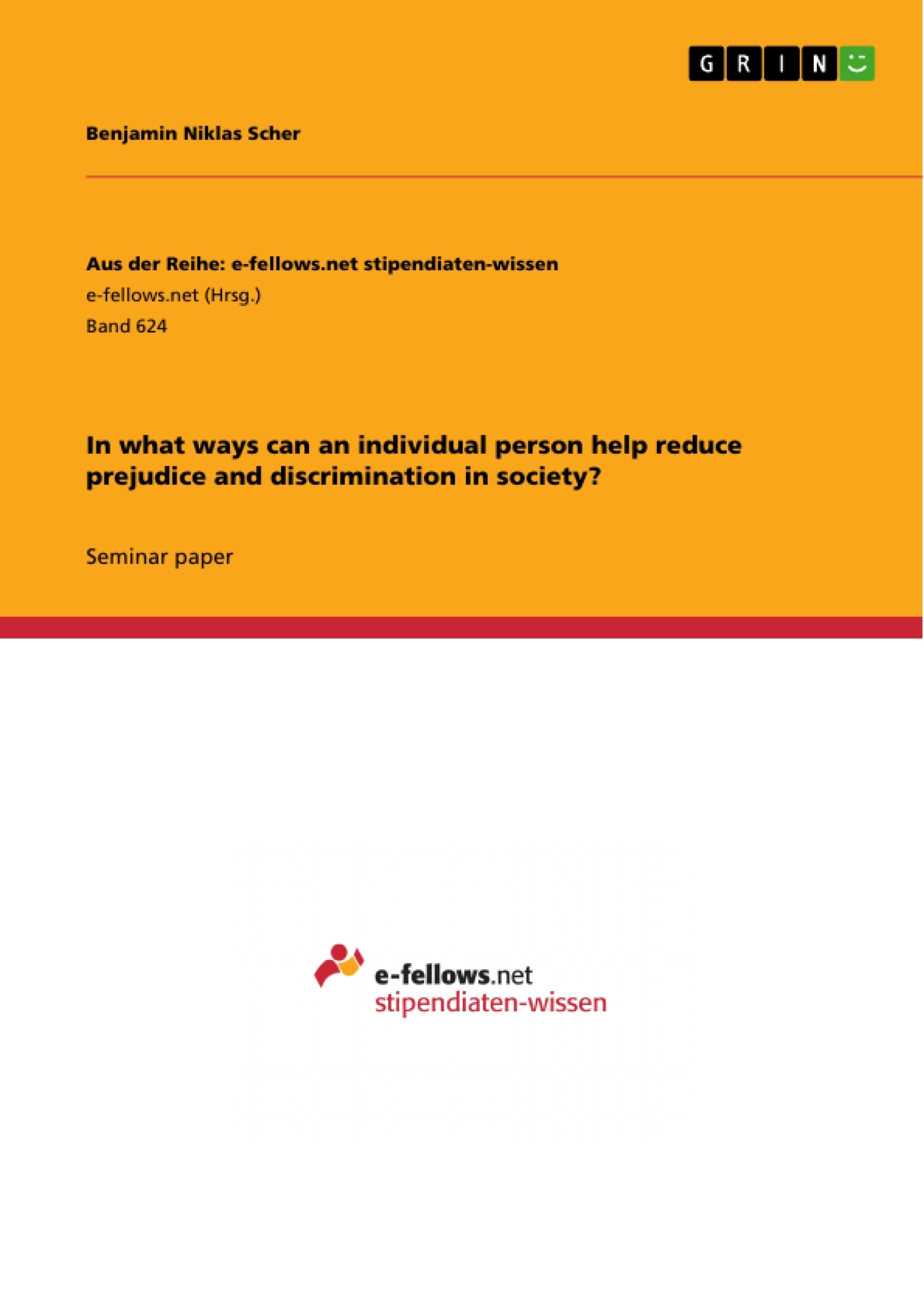This paper starts by pointing out why stereotypes are harmful, especially for the recipient. Some consequences are increased anger, depression, and lower task performance.
Continuing by explaining how an individual can reduce discrimination within himself as well as in a group this paper draws from the three main theories of stereotype development, namely social cognition perspective, social identity perspective and the discursive perspective. Drawing also from insights from the economic sociology I conclude that high status, power and a position in a structural hole between groups are facilitators for combating discrimination. Finally an example setting integrates the different theories and measure explained.
Table of Contents
- Introduction
- Explanation for stereotypes
- Prejudice reduction within an individual
- Prejudice reduction within groups
- Personal disadvantages from combating stereotypes
- Setting example
Objectives and Key Themes
This paper aims to investigate the ways in which an individual can contribute to reducing prejudice and discrimination in society. It explores how individuals can combat prejudices within themselves, shape the societal framework to combat prejudices, and address the potential personal disadvantages of actively tackling discrimination.
- The harmful effects of stereotypes and discrimination
- Individual strategies for combating internal prejudices
- The role of social networks and intergroup contact in reducing prejudice
- The impact of status, power, and structural holes on individual influence
- Conditions for successful intergroup contact in prejudice reduction
Chapter Summaries
The introduction establishes the detrimental consequences of stereotypes and discrimination for individuals and society. The paper then explores three main perspectives on the origins of stereotypes: social cognition, social identity, and the discursive perspective.
The chapter on prejudice reduction within an individual examines self-regulation as a strategy for combating internal prejudices. It emphasizes the importance of conscious control over behavior to counteract automatic stereotypical thinking. The chapter also discusses the potential personal costs of self-regulation, such as reduced cognitive resources.
The chapter on prejudice reduction within groups explores the role of individual bystanders in responding to discrimination. It highlights the effectiveness of avoiding arguments, expressing personal feelings about discrimination, and utilizing cognitive dissonance to challenge prejudiced beliefs. It also examines the influence of individual status, power, and position in social networks on their ability to shape group behavior.
Keywords
Stereotypes, prejudice, discrimination, social cognition, social identity, discursive perspective, self-regulation, intergroup contact, status, power, structural holes, cognitive dissonance.
- Citation du texte
- Benjamin Niklas Scher (Auteur), 2012, In what ways can an individual person help reduce prejudice and discrimination in society? , Munich, GRIN Verlag, https://www.grin.com/document/208435



